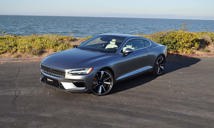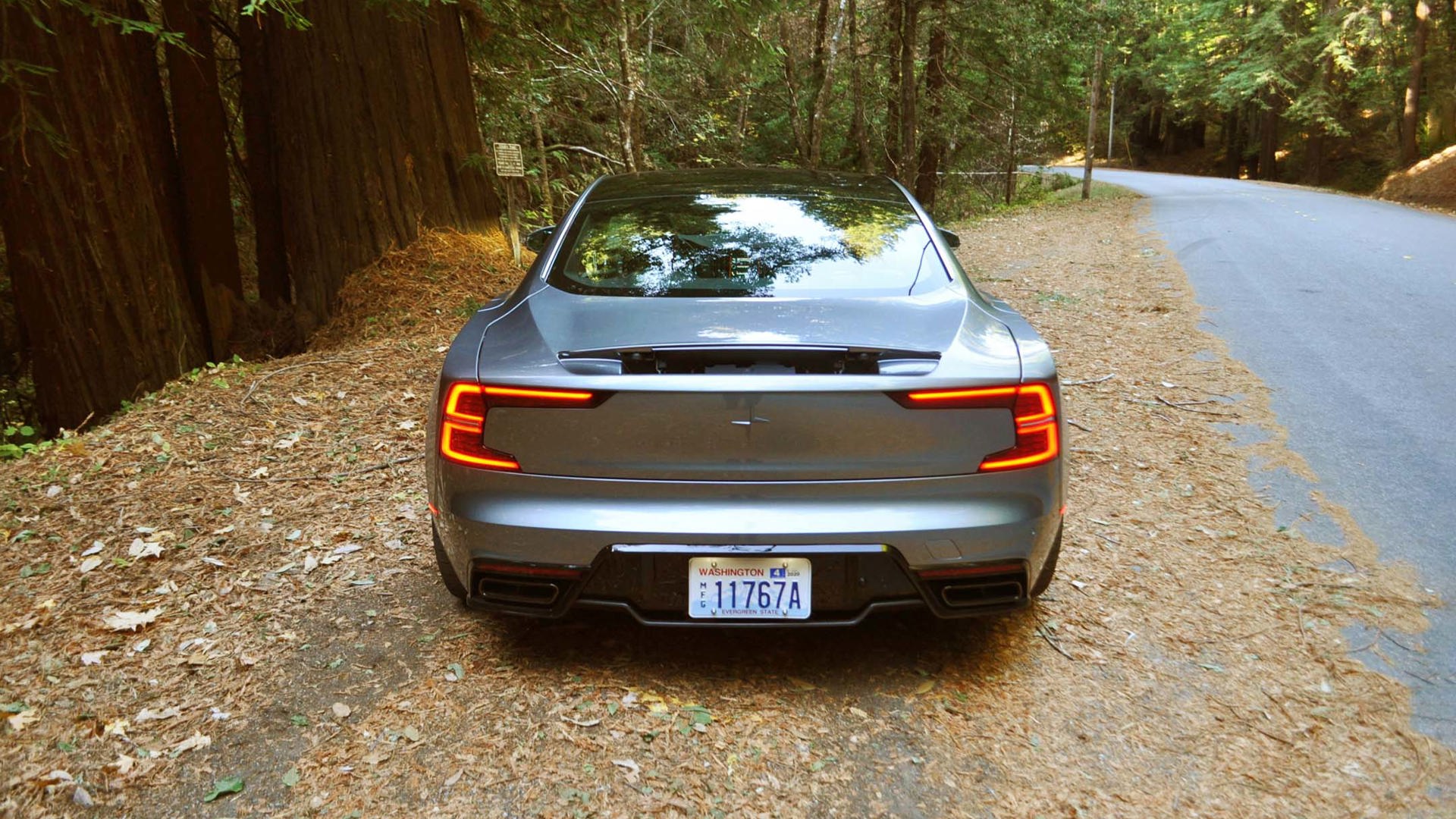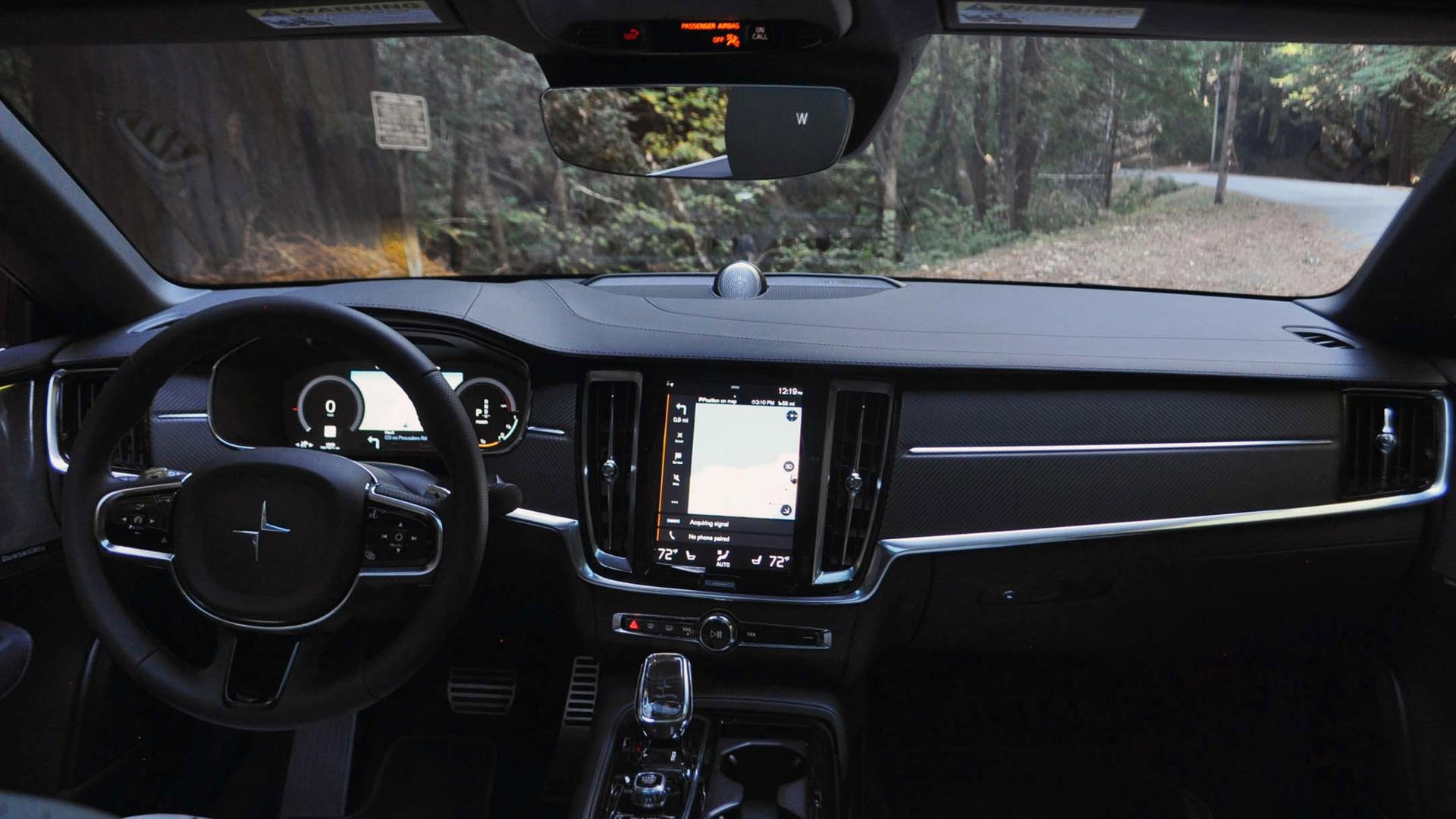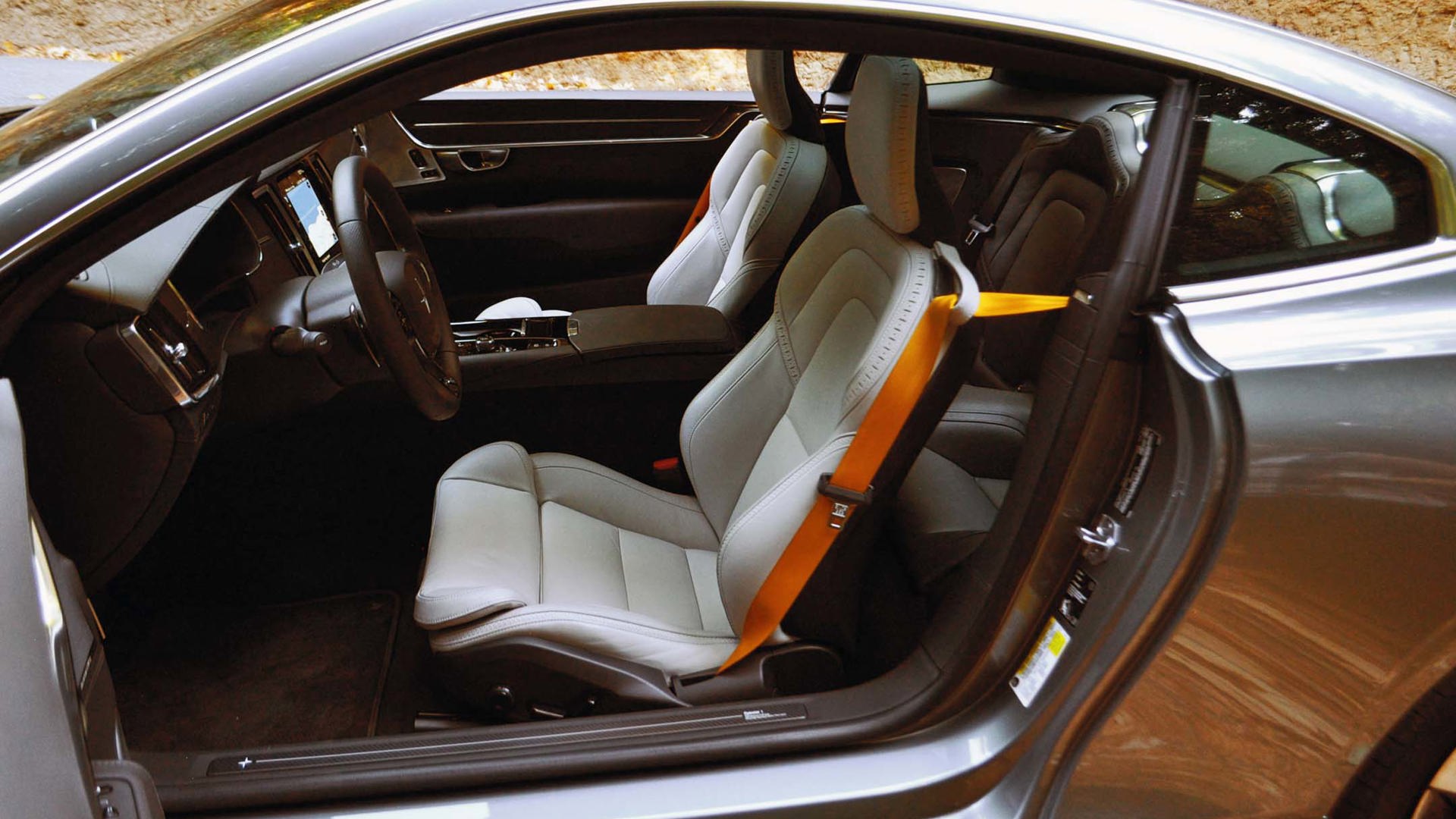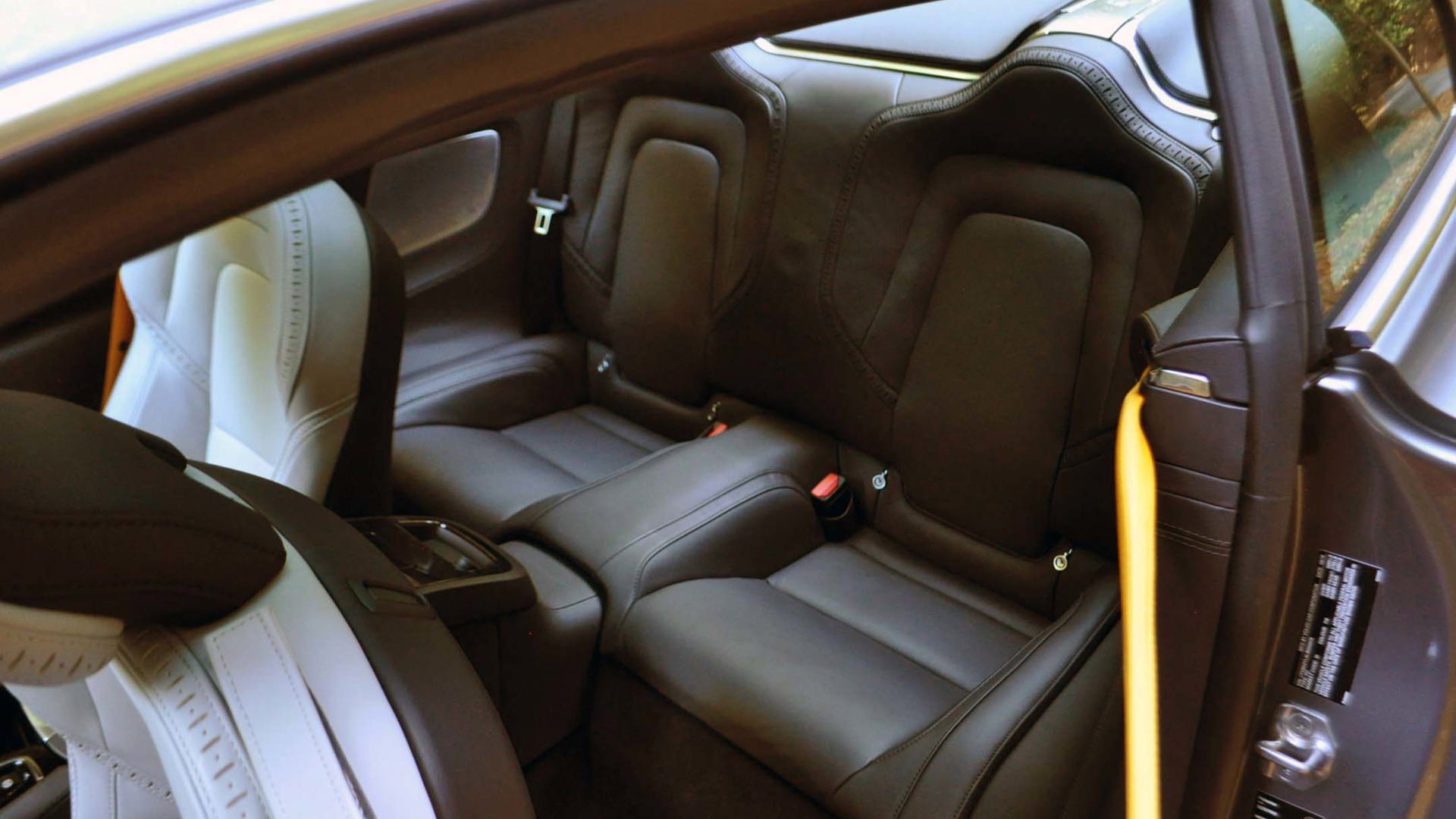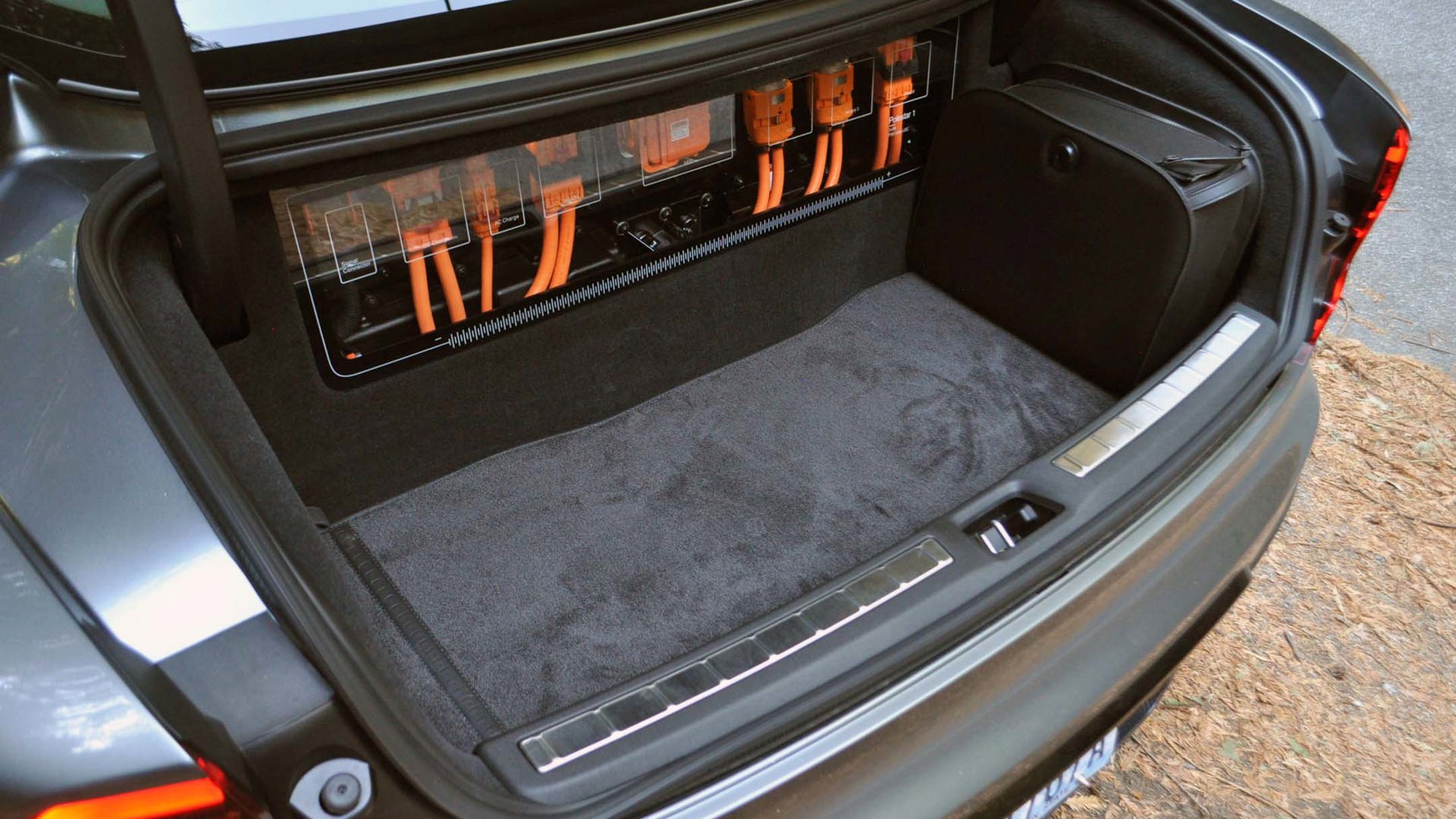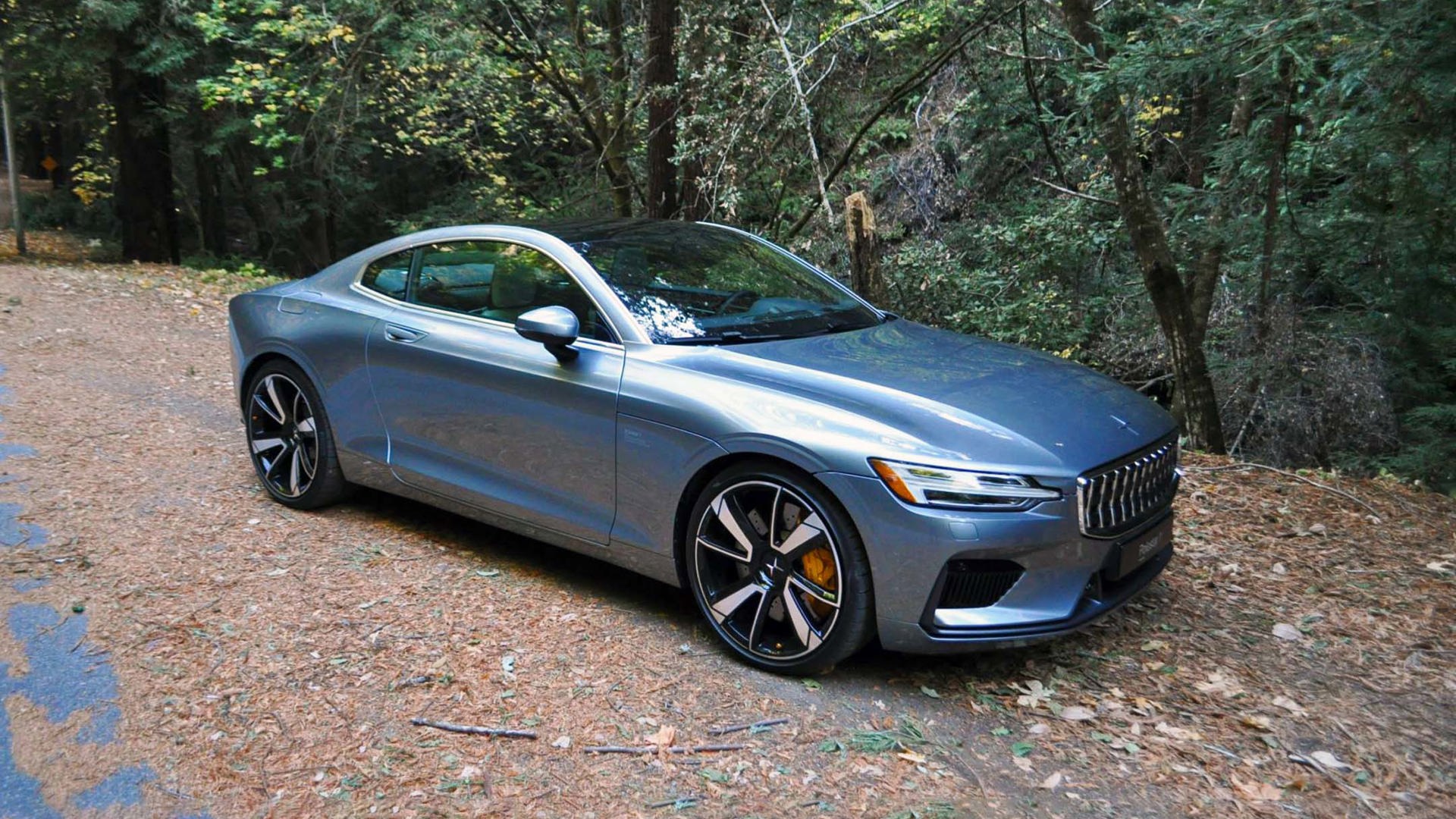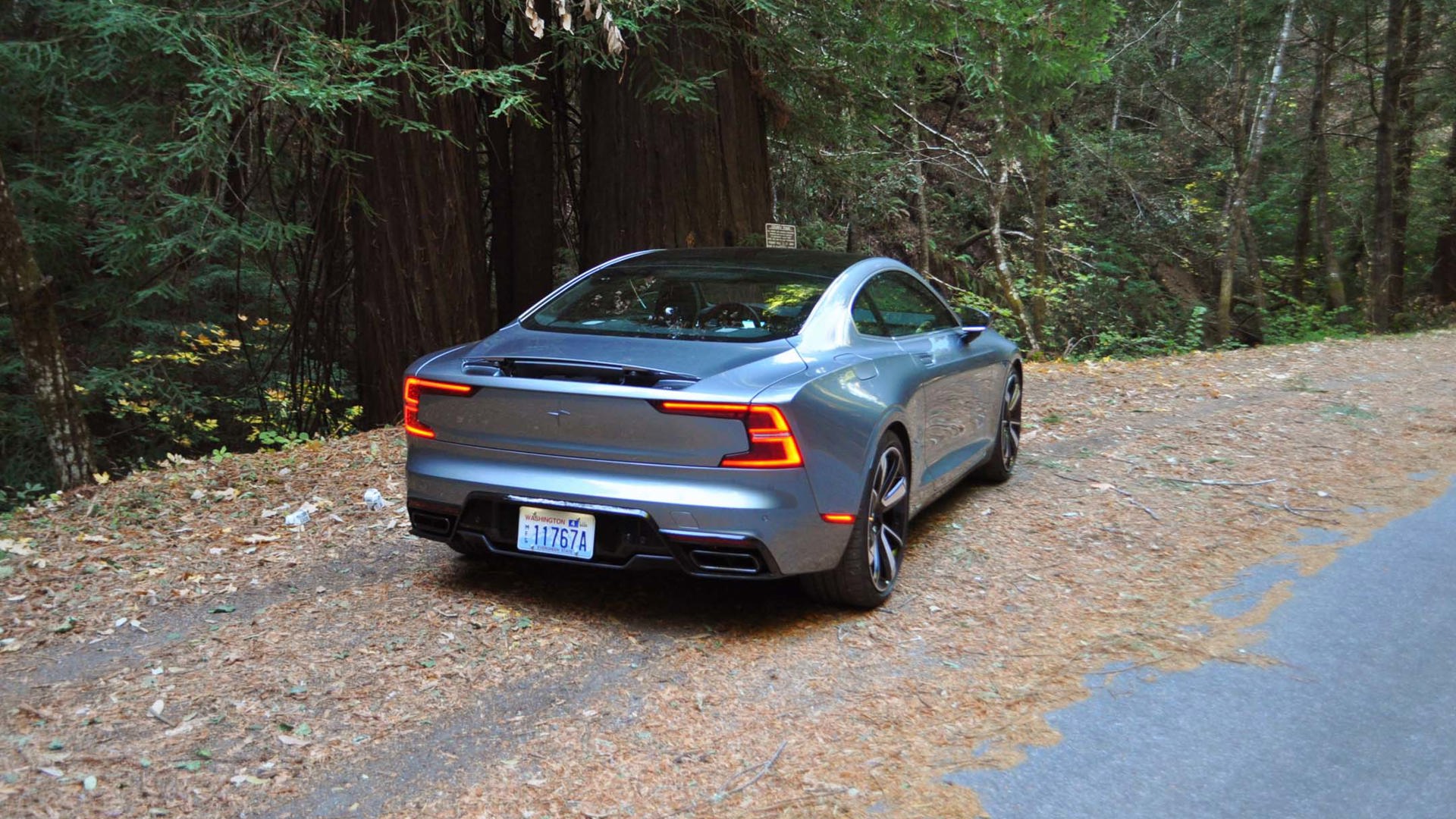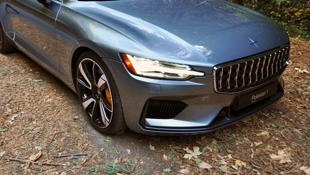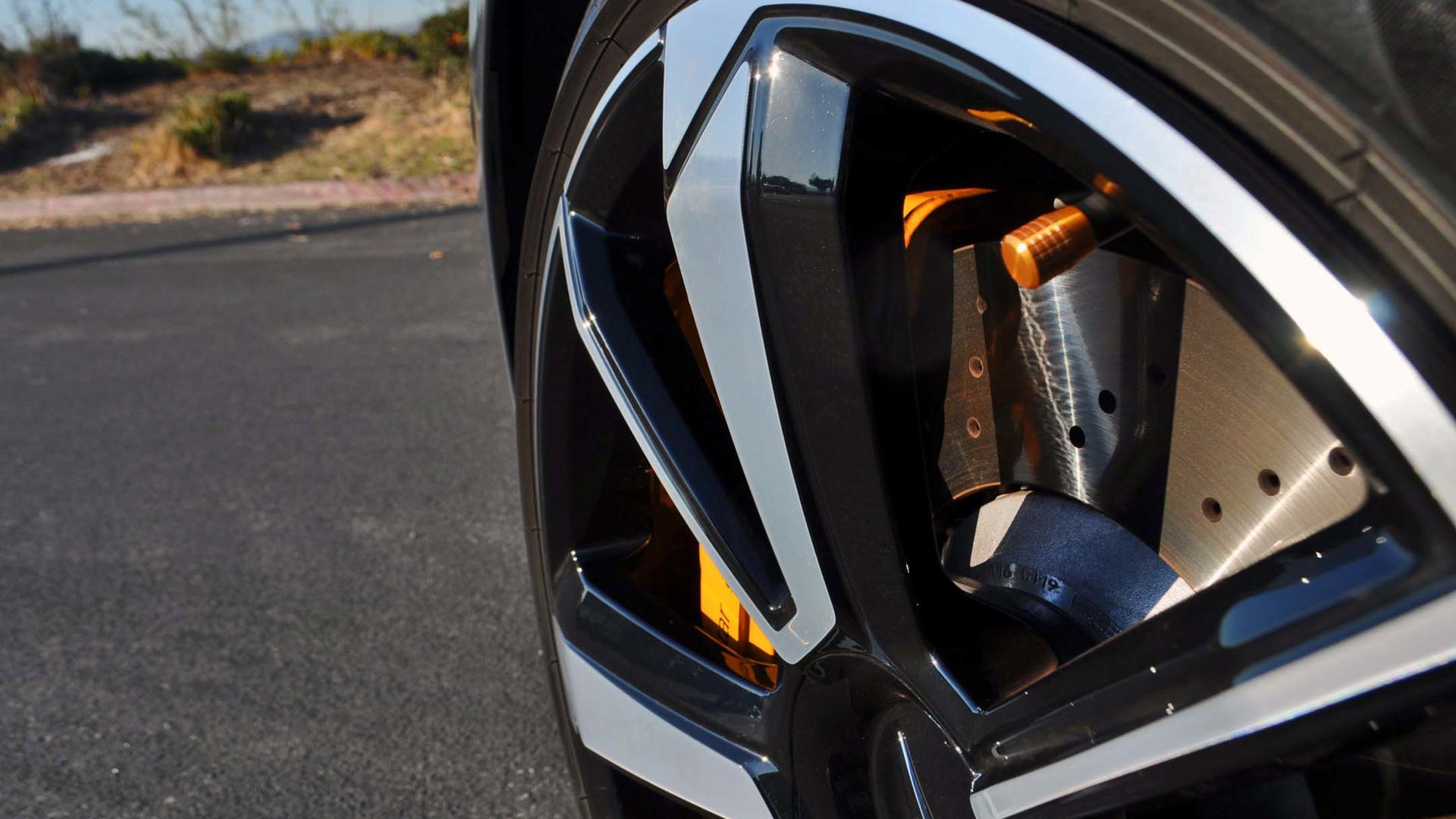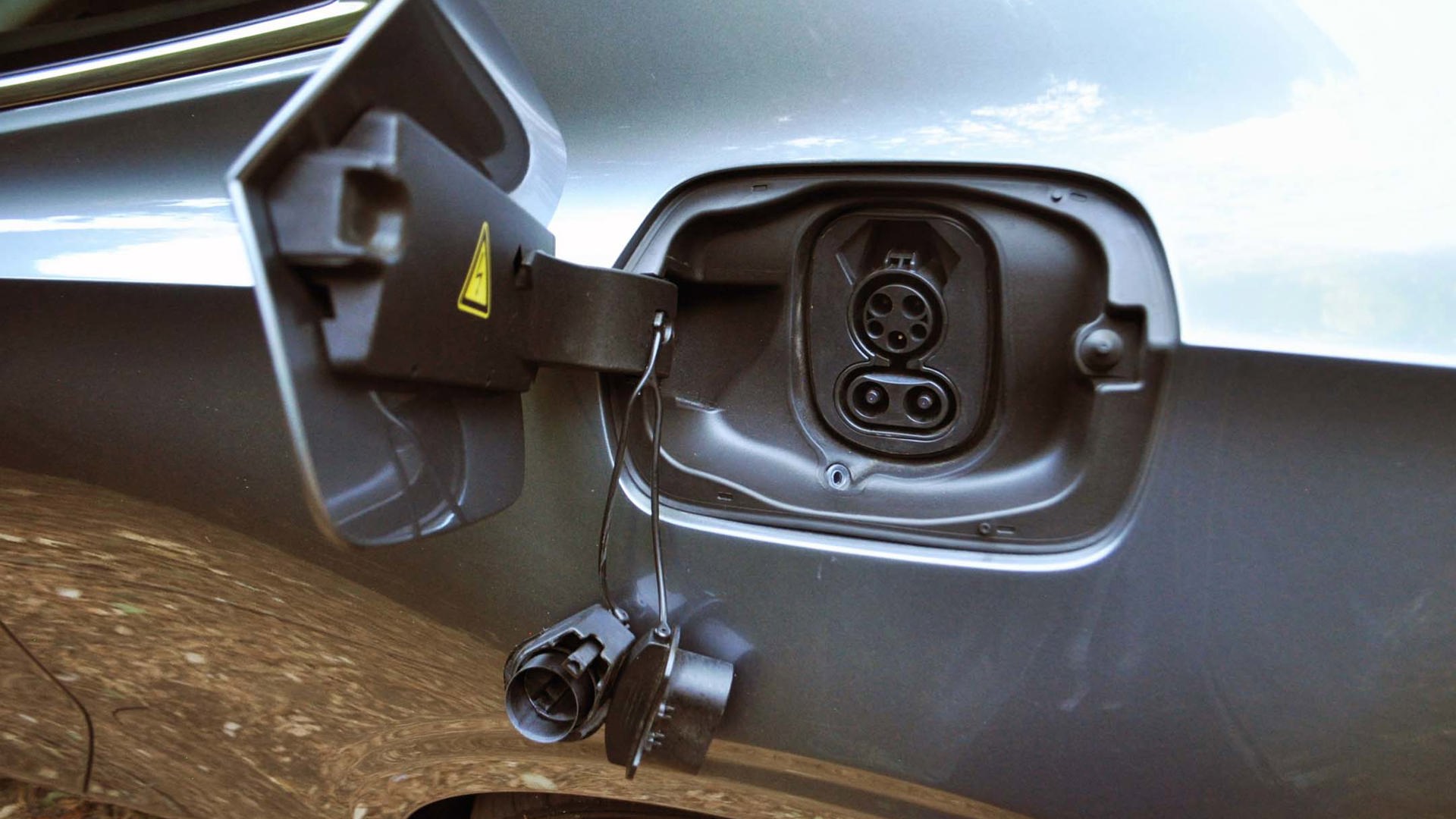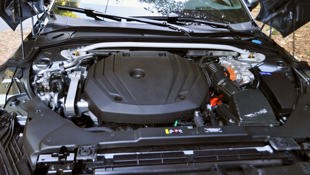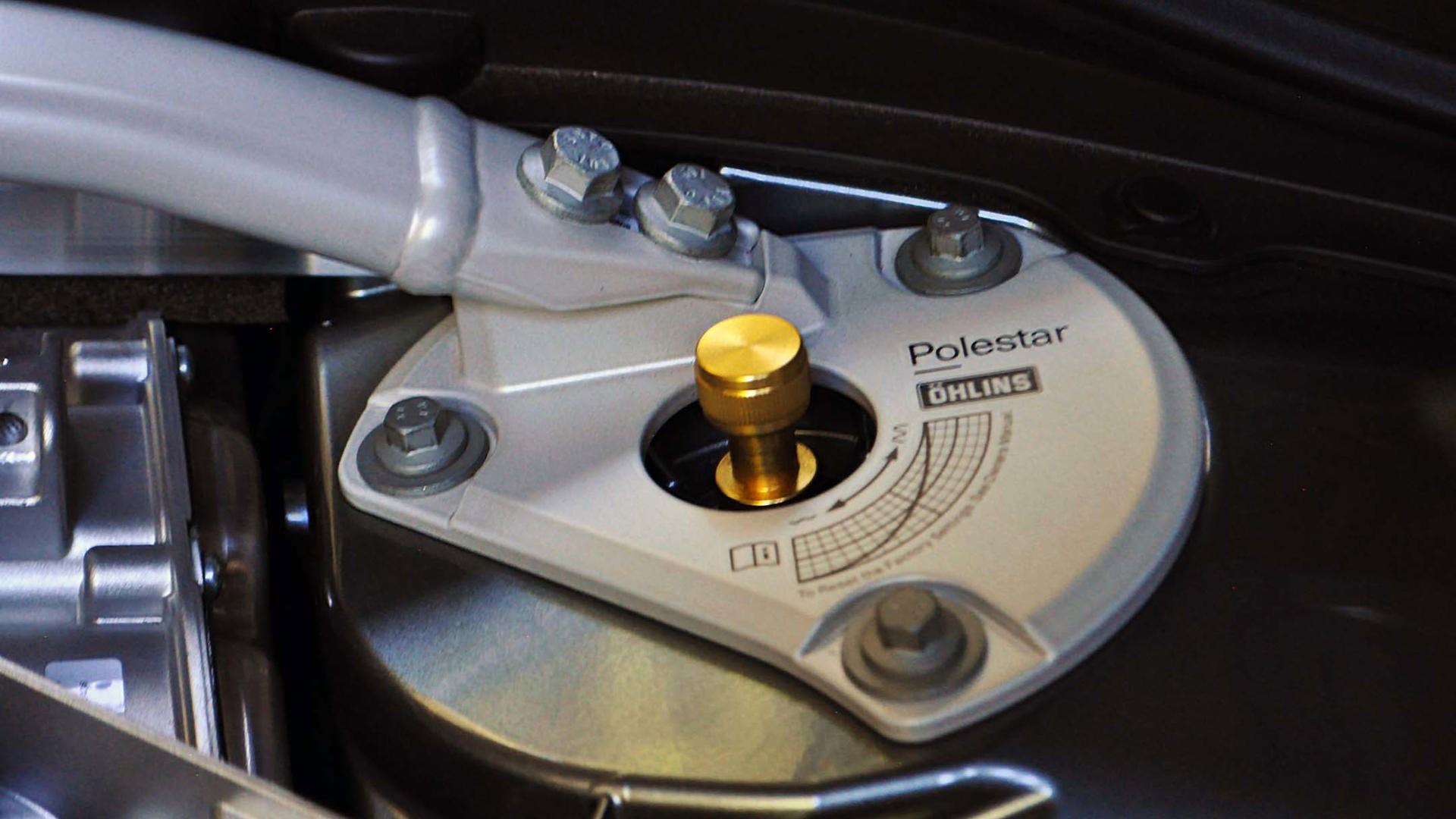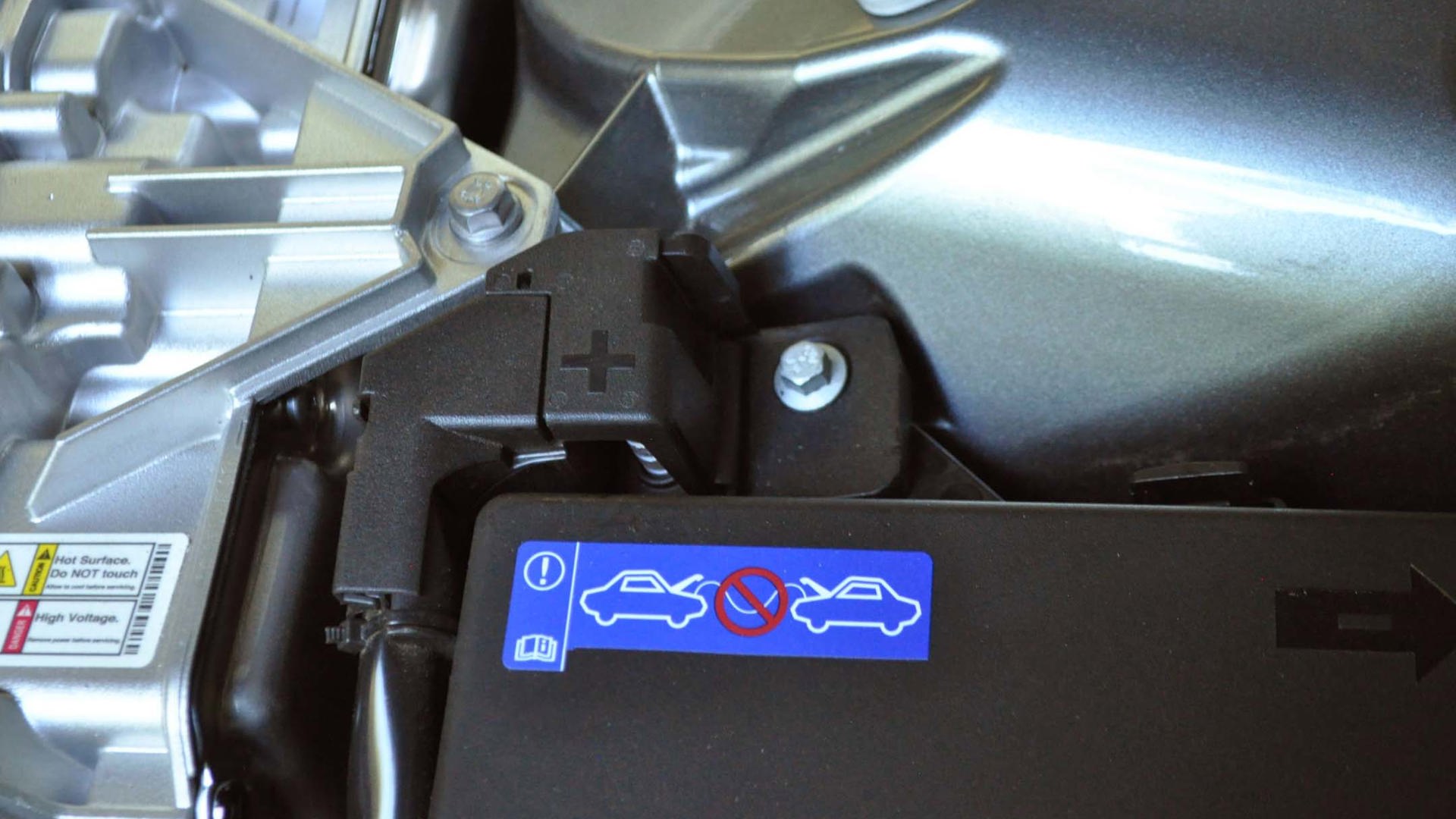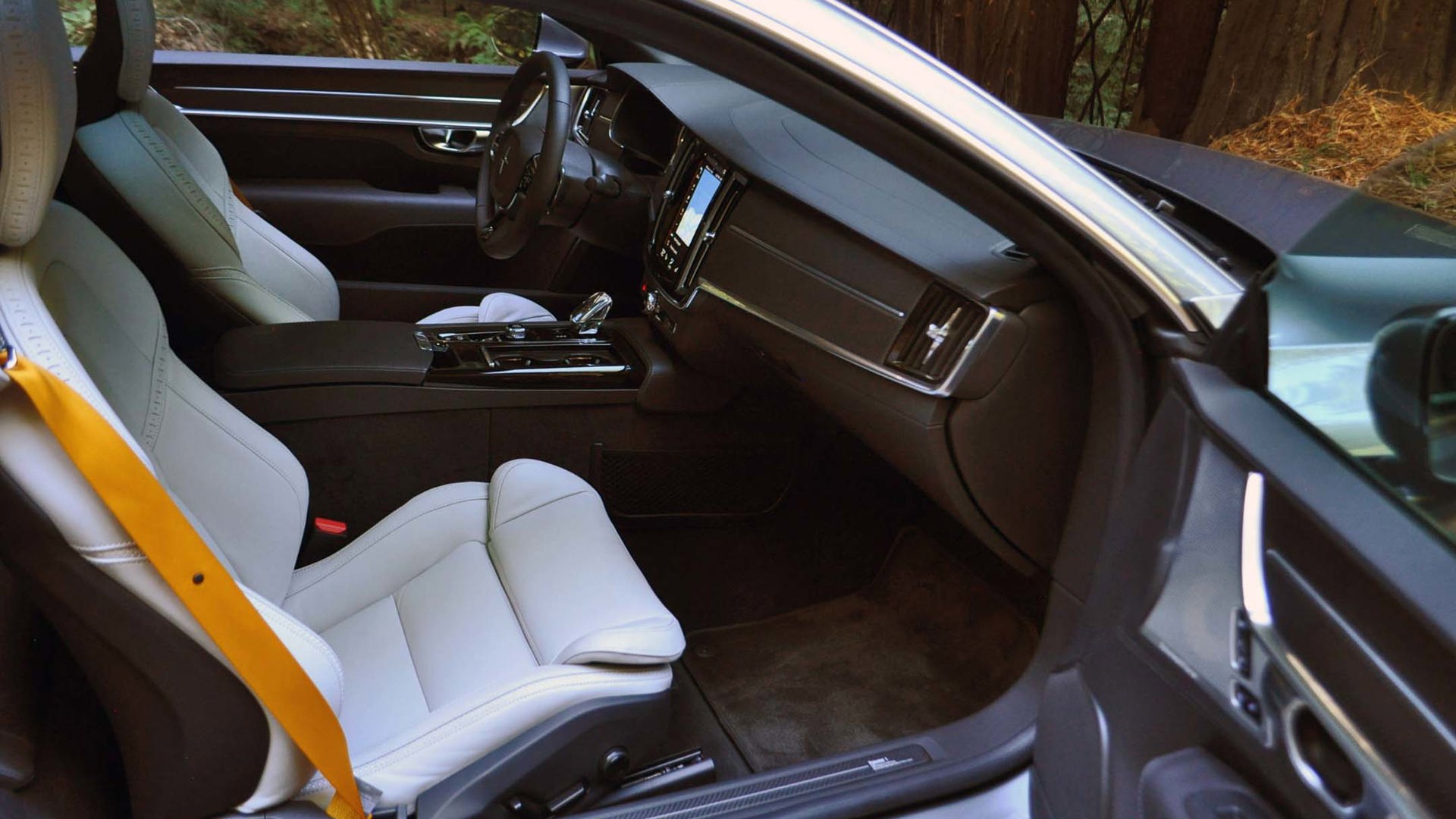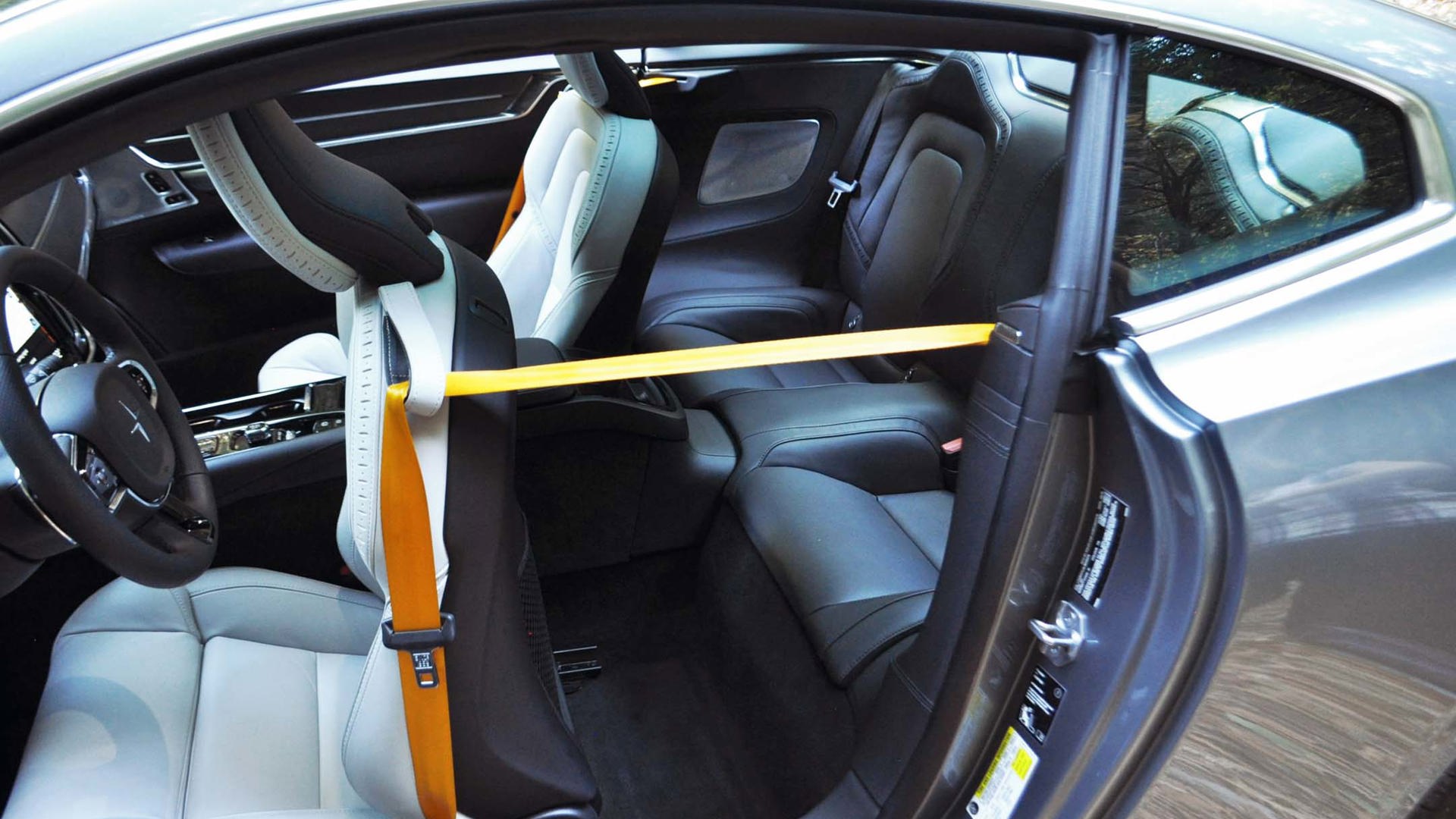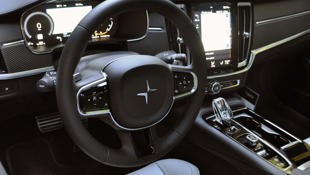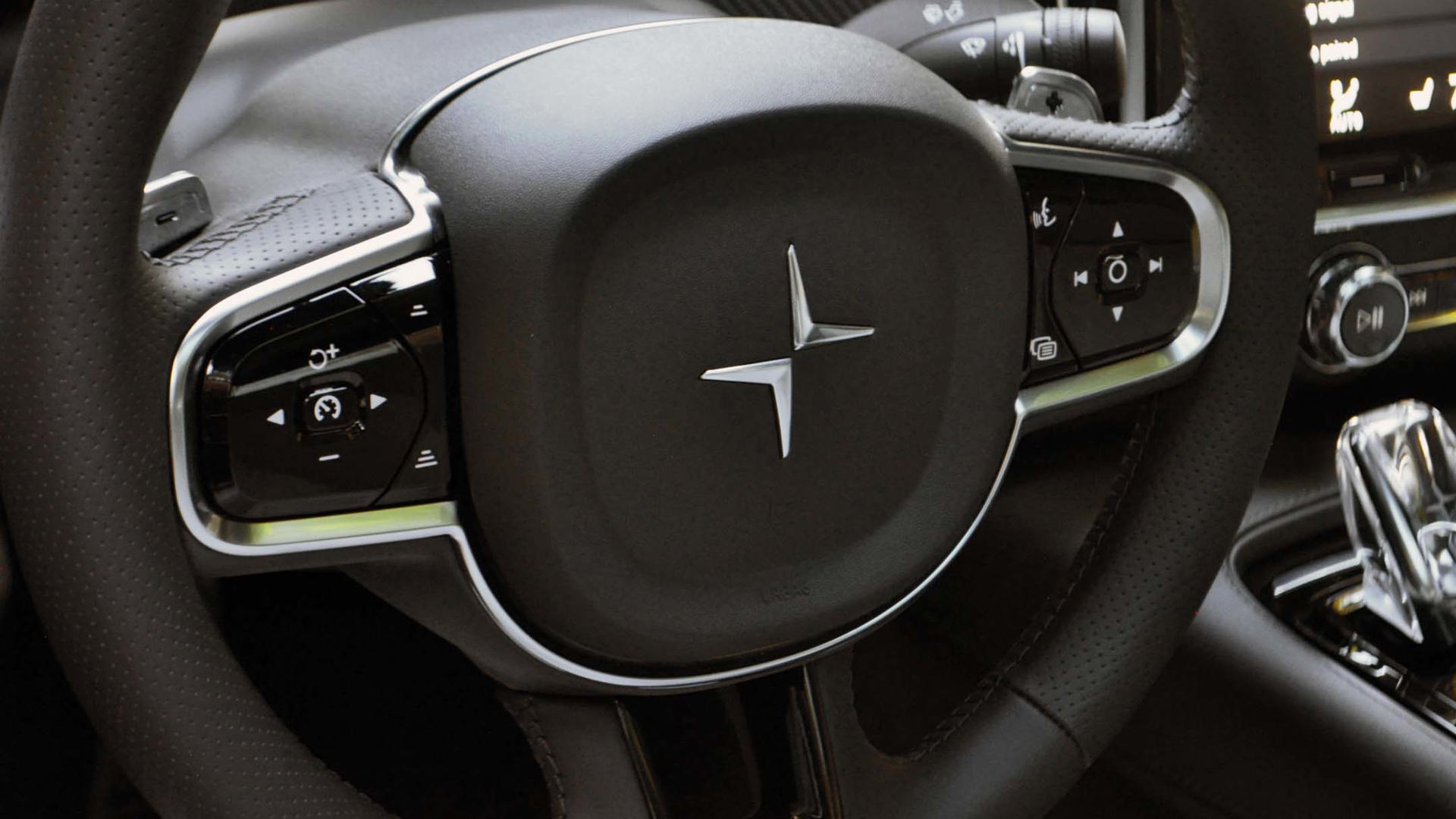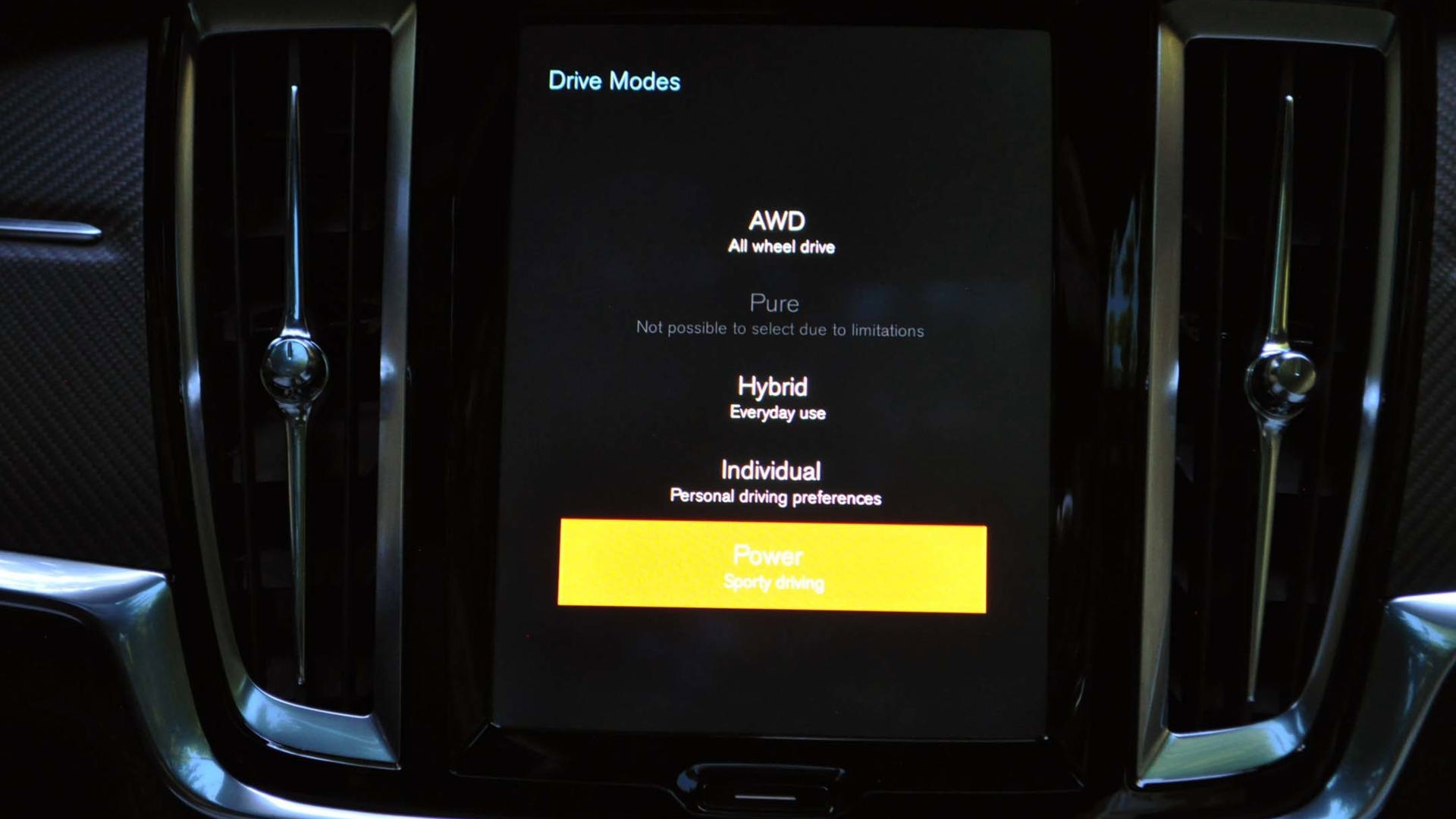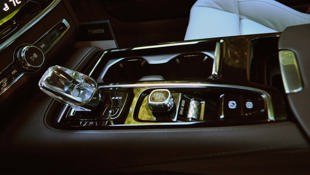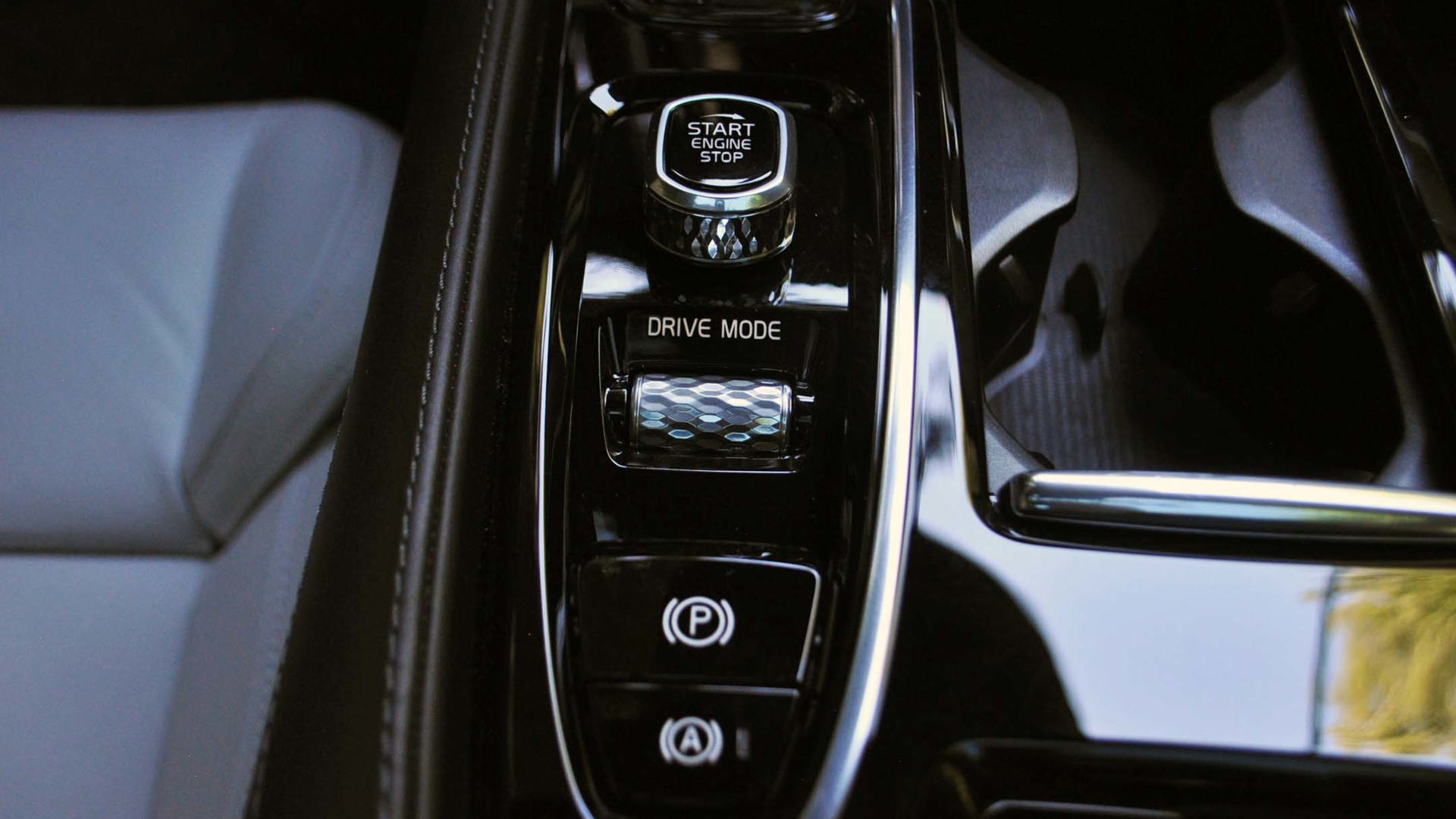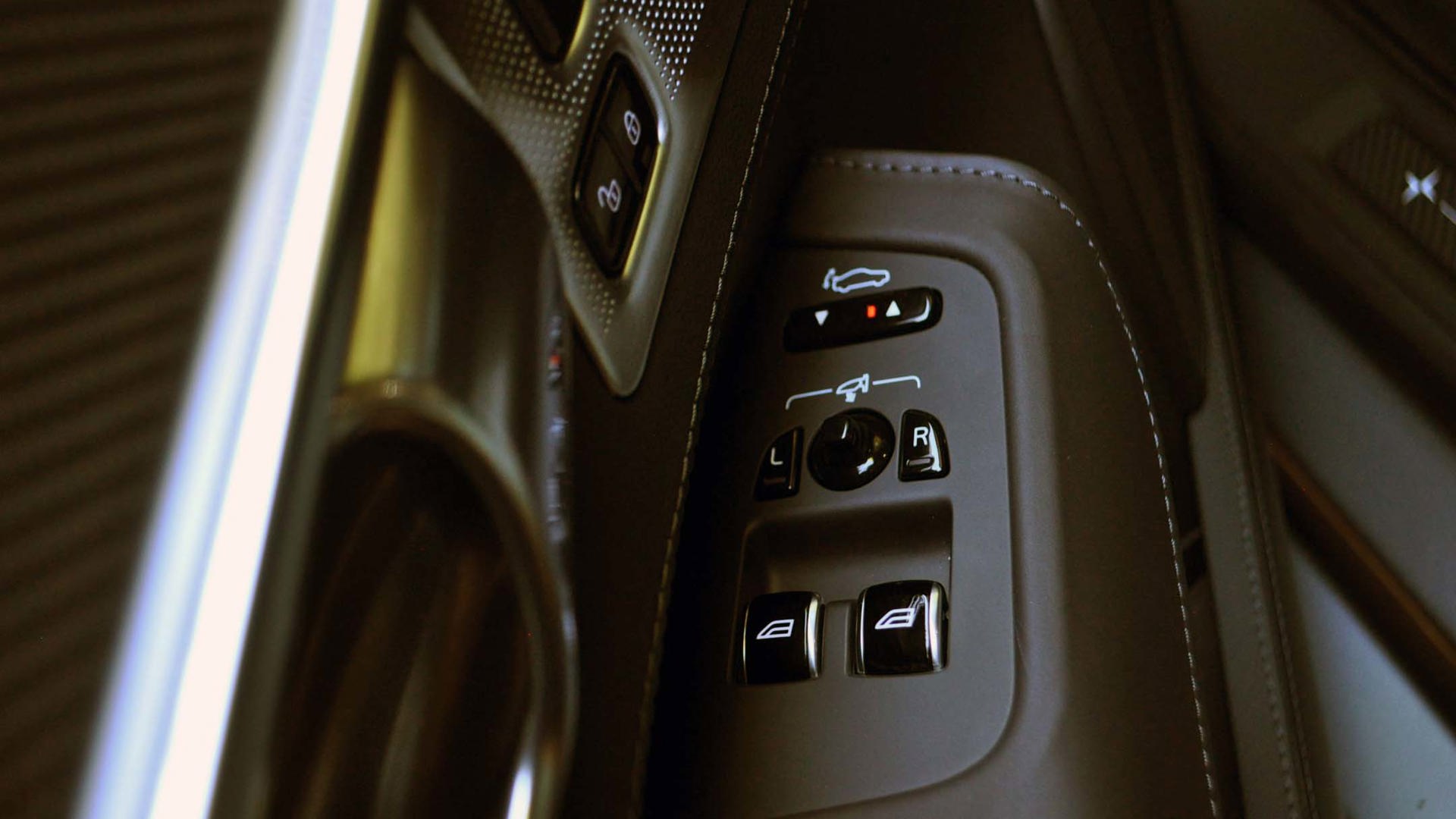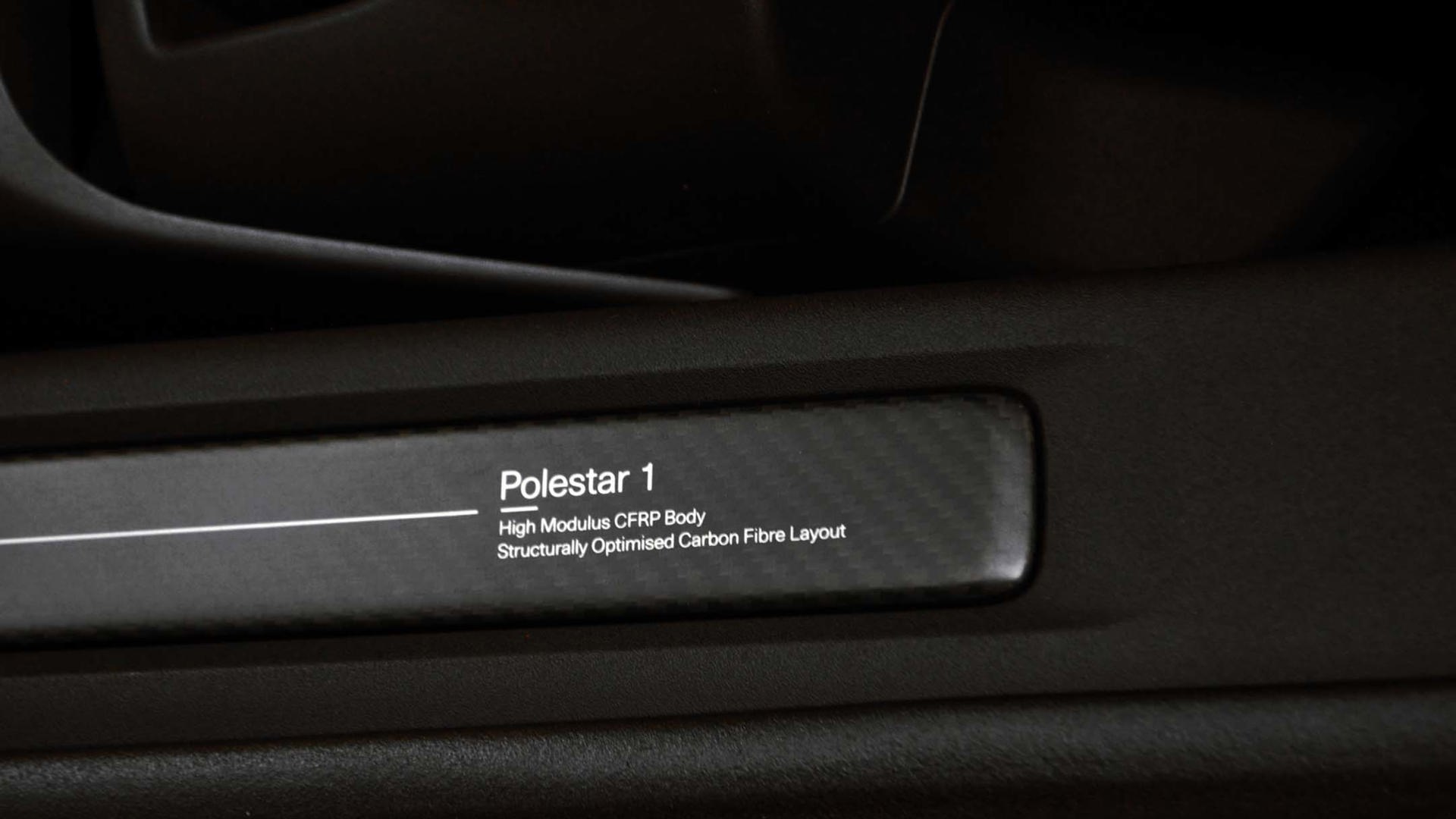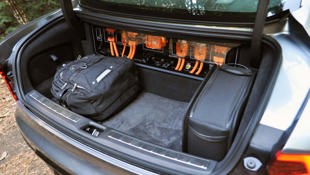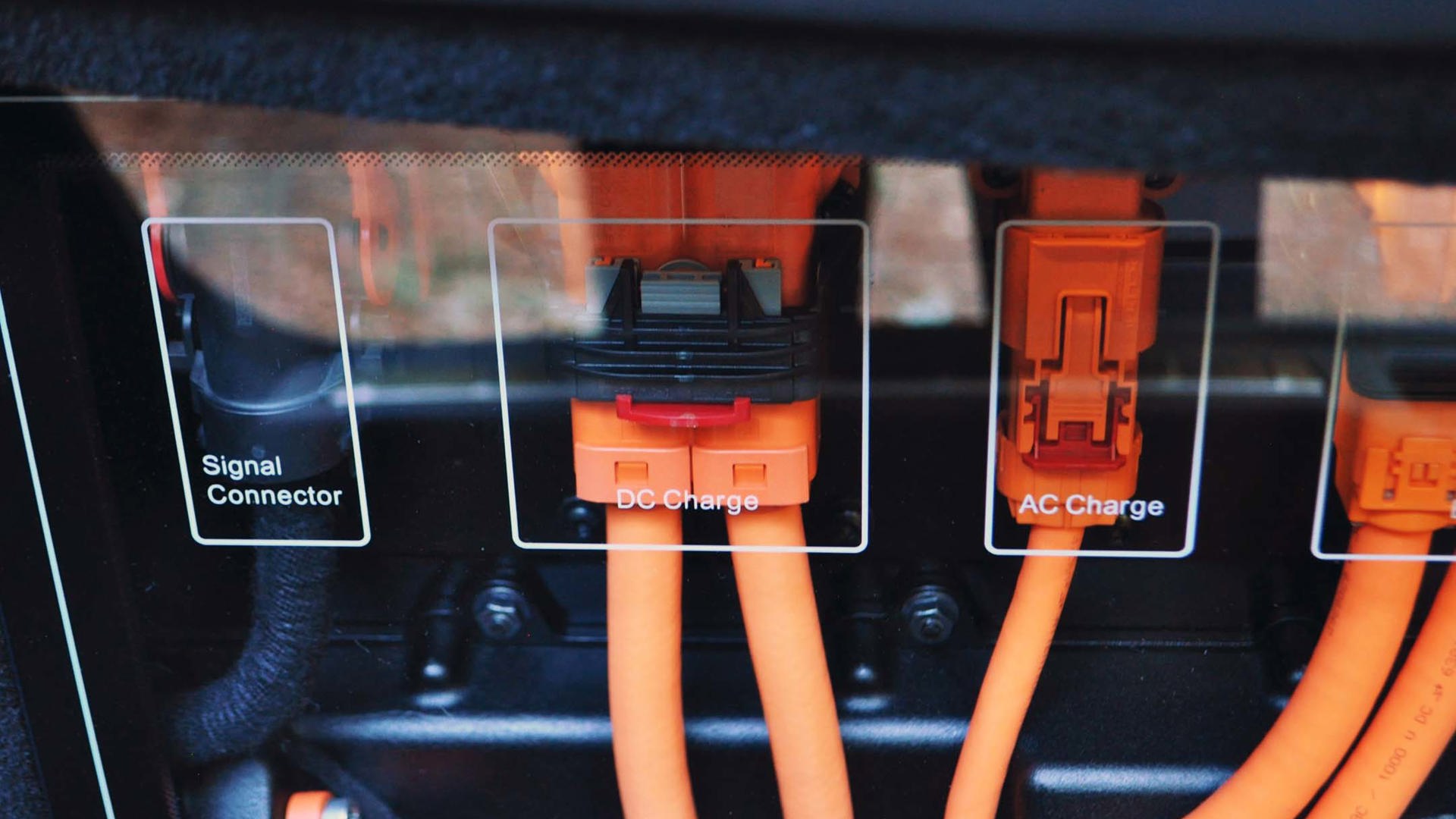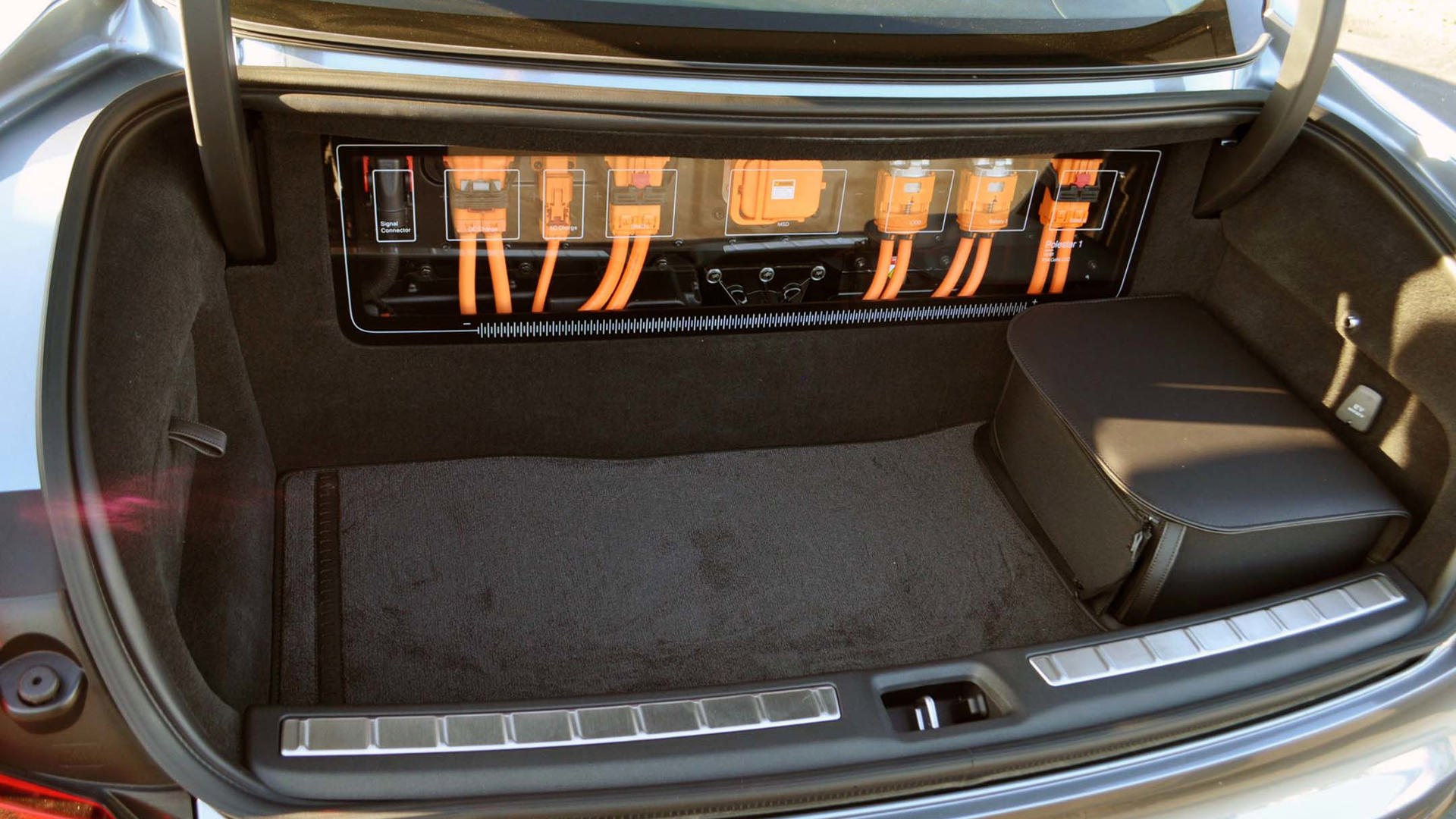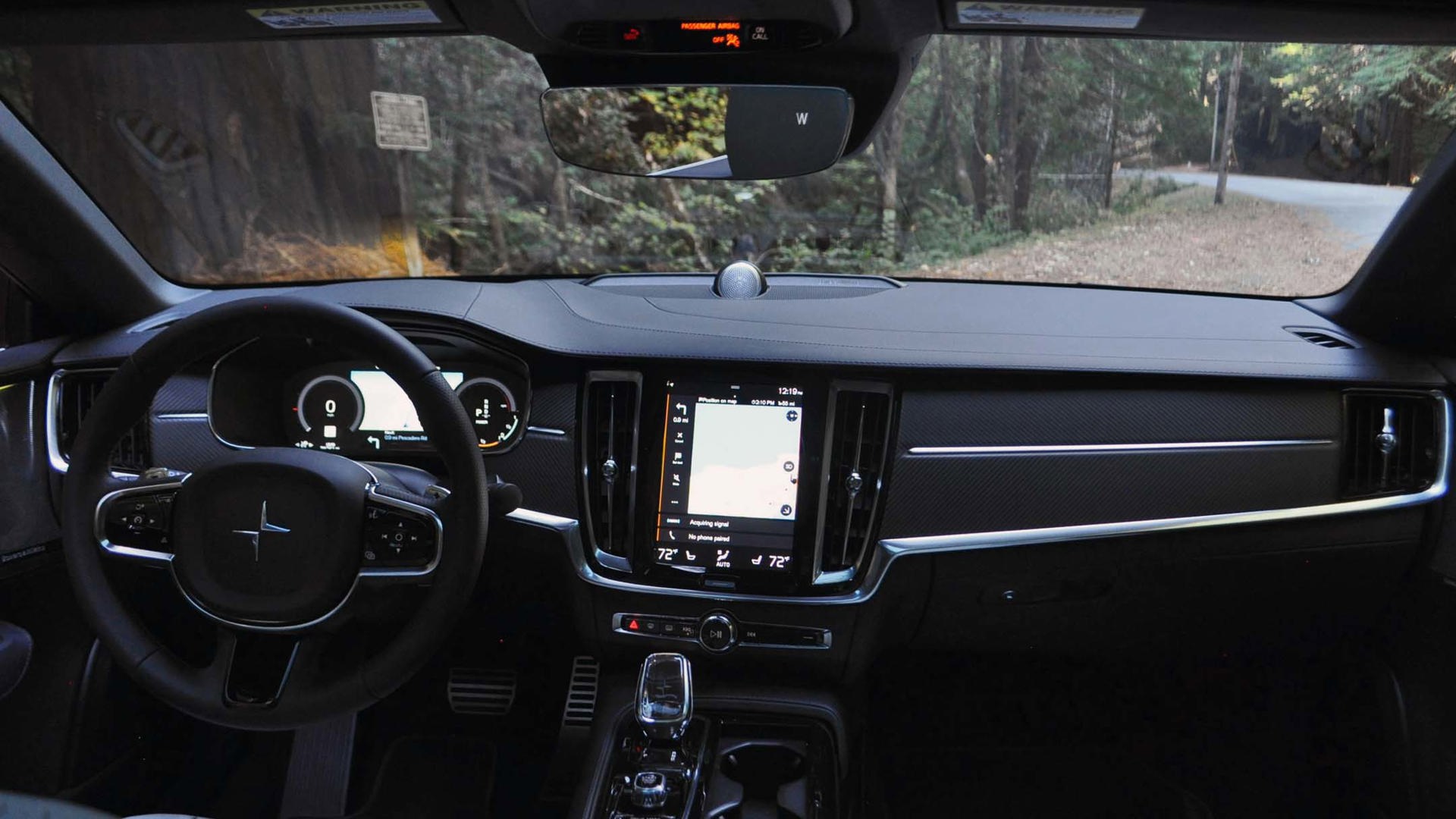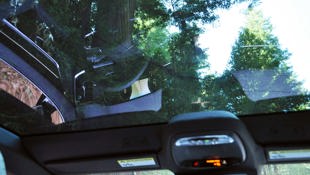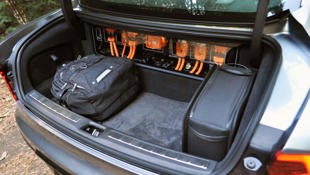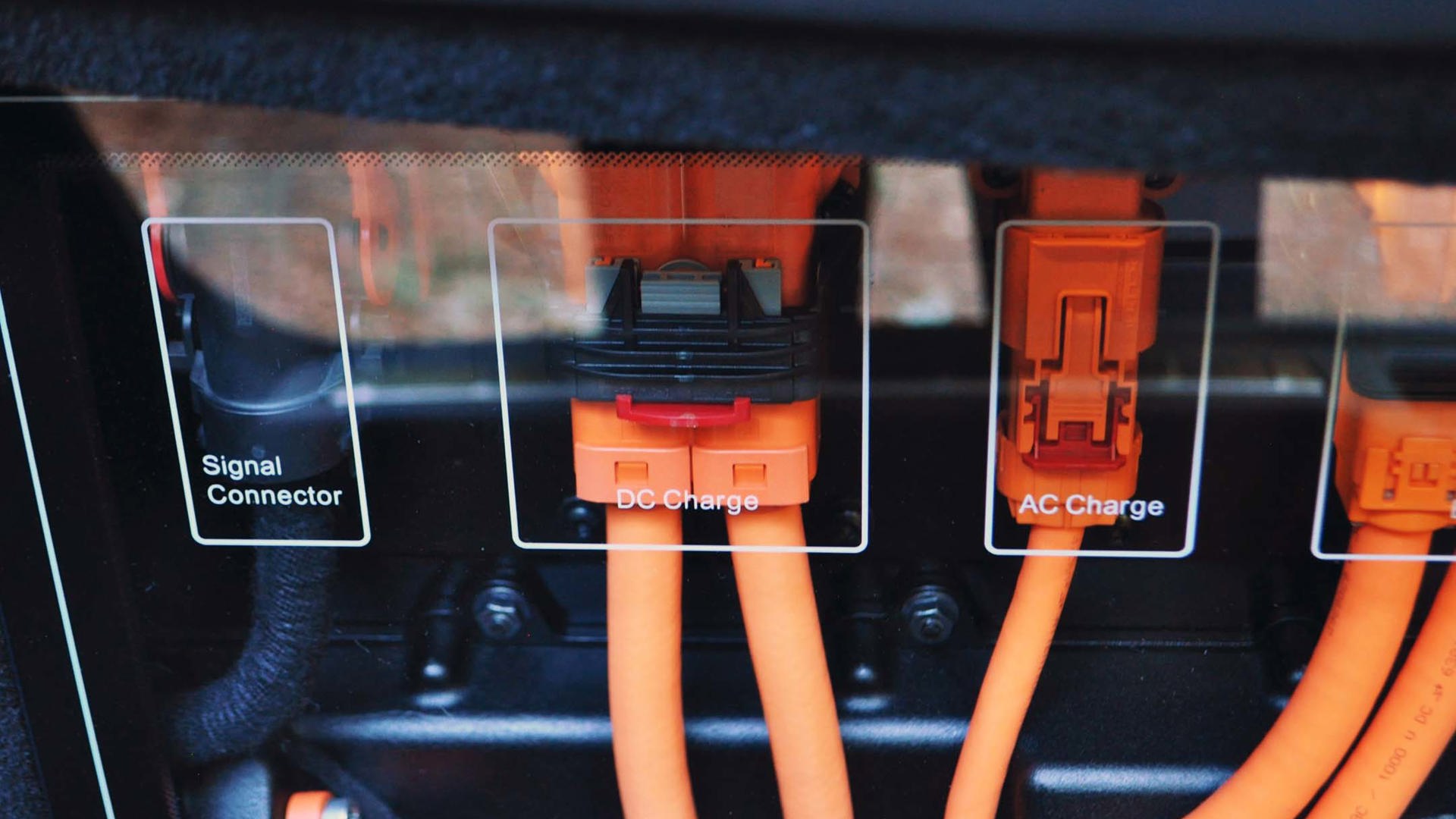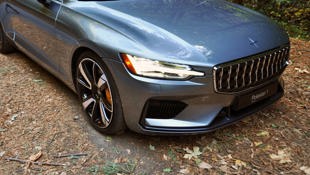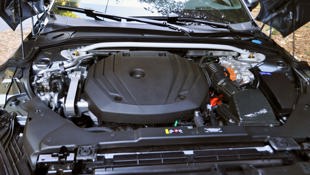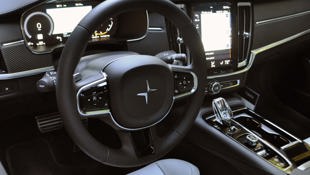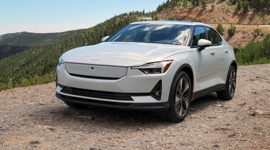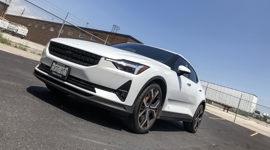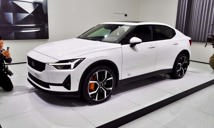 AutoTrader SCORE
AutoTrader SCORE
-
STYLING8/10
-
Safety8/10
-
PRACTICALITY6/10
-
USER-FRIENDLINESS7/10
-
FEATURES7/10
-
POWER9/10
-
COMFORT8/10
-
DRIVING FEEL8/10
-
FUEL ECONOMY8/10
-
VALUE6/10
SAN FRANCISCO, CA – The all-new 2020 Polestar 1 grand touring coupe is part Volvo and part Geely, part green car and part performance two-door – and is likely the most expensive four-cylinder production vehicle to ever go on sale in Canada.
This stately yet alluring halo car for Volvo’s soon-to-launch sportier electric brand starts at $199,000, including freight. The bulk of its high cost derives from three key aspects: its carbon-fibre body and underpinnings, its exotic-worthy exclusivity, and its advanced plug-in hybrid powertrain. It may not be the quickest or the least polluting compared to its closest battery-electric rivals, yet the Polestar 1 does make a good case for itself with the longest electric range of any plug-in hybrid vehicle on the market, plus quick charging capability. Or at least it will, once it starts arriving in early 2020.
Styling: 8/10
Based on a more compact version of the platform underneath the Volvo S90 full-size sedan, the Polestar 1’s closest corporate sibling, this lower-slung coupe comes in at 377 mm shorter than the S90, and importantly, 270 kg lighter. The hood is a unique clamshell design with no shut lines running along the top, which Polestar says couldn’t be done with steel.
There are nonetheless many visual cues that we’re looking at a Volvo S90 coupe with slightly different badges on the steering wheel and each end, with the Thor’s hammer headlamps the most prominent clue. But overall, the Polestar 1 attracted lots of positive attention wherever it stopped, even if some folks – and perhaps the majority – had no idea what kind of car it was.
Safety: 8.5/10
Utilizing much of Volvo’s advanced safety technology, the Polestar 1 comes loaded with the latest safety gear, including Pilot Assist, designed to help you come to a stop and restart in heavy traffic; active cornering headlamps (with high-speed washers); collision mitigation; and lane-keeping assist. Other more common systems include a blind spot info system, a 360-degree camera, and a knee airbag for the driver.
Practicality: 6.5/10
The large doors and low seating positions don’t lend themselves to frequent mall trips, but once seated inside, there’s lots of elbow and legroom for those up front. Those in the back seat are certainly at a disadvantage here, not only because they don’t receive the snazzy gold seatbelts of the front row, but also because Volvo literally advises that they’re not for folks taller than roughly 4'8". Plus, the trunk has a tiny 125 L of space, though Volvo engages in a bit of lampshade hanging by artistically displaying the battery cells and their attendant high-power wires inside a glass case.
User Friendliness: 7.5/10
This is an area where the Polestar 1 benefits from lessons learned with the Sensus system present in the latest high-end Volvo interiors, with its vertically oriented touchscreen that is relatively quick to comprehend and adjust. Not so easy to comprehend is why every shift out Park or Reverse from the Polestar 1’s unique rear crystal gear selector needs two pushes to reach the desired gear.
Unfortunately, its head-up display system is largely wiped out by polarized sunglasses, and given the sunny conditions in our drive in and around San Francisco, I only noticed it even had the feature as we were climbing out of the car at the end of the day.
Features: 7.5/10
Inside the Polestar 1, the most noticeable feature is the all-glass roof, which provides a light and airy feel, though doesn’t have a cover to set out for when the blazing sun is right overhead. Good thing it has cooled seats... oh wait, it doesn’t have that either. This is not the most pampering luxury car, or feature-laden sporting machine, but it does do extremely well in both roles, falling closer to the former a little more than the latter: two-position memory seats, Nappa leather, a 15-speaker Bowers and Wilkins with a rear-mounted amp, and a cushion extender on the front seats, among a laundry list of other features.
Power: 9/10
This is where the Polestar 1 gets fun. There’s a turbocharged and supercharged 2.0-litre four-cylinder engine, which on its own puts out a very healthy 326 hp and 384 lb-ft of torque. These are worthy and important numbers to keep in mind, but certainly not $200K numbers. No, those come when you add in the extra oomph provided by the two rear electric motors, each providing power to a single rear wheel. Combine the power of all three power sources, and you’re in top-end sports car territory: 619 hp and 737 lb-ft of torque. With those figures at its disposal, it can sprint from zero to 100 km/h in 4.2 seconds, says the company.
Granted, the Polestar 1 still weighs in at a hefty 2,350 kg (5,170 lb), so it’s clearly not a lightweight, performance-first track animal. Nor was it meant to be. But the biggest problem with looking at these exotic horsepower and torque figures is that after the Polestar 1 consumes its WLPT-estimated 125 km of stored electricity, the rear two motors “go dark” – and the car essentially becomes a more modestly powered front-wheel-drive grand touring machine, as the gas engine only powers the front wheels.
Comfort: 8.5/10
With lots of elbow and headroom, plus a wide degree of adjustability on the seats, it’s hard to complain about comfort, especially in this car (okay, maybe from the back seat). It was somewhat surprising not to see massage seats or even cooled seats in a car at the $200K mark, but overall the super-quiet Pure mode ladled on the peace and quiet in heaping amounts.
Sure, there was a bit of wind noise at highway speeds, which was surprising given the aerodynamic shape of the Polestar. But once you set up your presets and screen the way you’d like it, the comfort and ease factor is high in the Polestar 1, especially given its performance. Mind you, we were on Cali roads, so we didn’t hit anything near as bumpy as the condo-sized potholes in Ontario and Quebec.
Driving Feel: 8/10
The Polestar 1 provides a finely honed balance of serene comfort and go-get-’em power and handling, with a refined driving feel but with shift paddles ready to make the engine work hard if you’d really like to push it. The engine note of this four-cylinder at high rpm is nothing to write home about, while the shift speed of the eight-speed automatic is far from the quickest or most responsive. But dial up the Power setting, wait for a smidge of straight road, bury the accelerator, and bam, that full power is unleashed in true exotic car fashion.
There are four driving modes built into this car’s electronic brain: Pure (all-electric propulsion, no matter how hard you hit the throttle, to a max of 160 km/h), an AWD mode that locks in all-wheel drive at 50/50 per axle, the default Hybrid mode that’s the most efficient mode overall, then an Individual drive mode that allows you to pick your favourite settings from these various modes.
Fuel Economy: 8/10
Here’s where things get interesting, if somewhat more vague, as Polestar has not received official EPA numbers in either range or overall fuel efficiency. But it has released the WLTP range that it quotes in Europe at 125 km, which is down notably from the 150 km they were quoting this summer at an early preview event. Official Natural Resources Canada figures will likely be down further still, when they come in closer to the Polestar 1’s launch in the first half of 2020. Polestar also has yet to release any estimates of fuel consumption after the 34 kWh battery runs out of charge.
On the plus side, the Polestar 1 will be only the second plug-in hybrid to offer quick charging, after the Mitsubishi Outlander PHEV. And the much longer range of the Polestar may make owners more likely to charge on a long trip, unlike most PHEV owners – using the CCS Combo standard, it can charge at up to 50 kW for a full charge in less than an hour; while on a Level 2 240V charger, it maxes out at 11 kW.
Value: 6/10
Value per dollar is where one can fairly ask the hard question: is the Polestar 1 truly worth $200,000? It’s certainly a risk to price an all-new car from an all-new brand this high, in the same stratum as the top Porsche Taycan Turbo models. But with only 1,500 Polestar 1 models planned for the entire global market in the next three years, the exclusivity of this vehicle is also part (or much) of the reason for this elevated cost.
“It’s a halo product, and a plug-in hybrid, but all the coming Polestar cars will be fully electric,” said Sofia Björnsson, commercial product manager for the Sino-Swedish company. While some might wonder why Polestar didn’t simply wait a few months to launch a fully all-electric brand, their market aggressiveness also speaks to the ambitiousness of the Polestar brand.
The Verdict
So where does this leave the Polestar 1? With only about 30 units planned to come to Canada in 2020, it certainly offers exotic exclusivity, adrenaline-pumping performance, worthy strides forward in the super-high-end plug-in hybrid market, and enough luxury to make the entire package enticingly well-rounded.
Sure, the similarly priced Porsche Taycan Turbo is a better handler, and the Tesla Model S offers quicker acceleration for less money, while both all-electric BEVs beat the Polestar from a green credentials and brand awareness/envy perspective. But if the Polestar 1 can help Volvo or other carmakers to hasten the arrival of more reasonably priced plug-ins with larger batteries and quick charge capability, which certainly make a lot of sense, it will have been a truly remarkable vehicle indeed for more than just Volvo and Geely.
| Engine Displacement | 2.0L |
|---|---|
| Engine Cylinders | I4 |
| Peak Horsepower | 619 hp combined |
| Peak Torque | 738 lb-ft combined |
| Fuel Economy | N/A |
| Cargo Space | 125 L |
| Model Tested | 2020 Polestar 1 |
| Base Price | $199,000 |
| A/C Tax | $100 |
| Destination Fee | Included in base price |
| Price as Tested | $206,600 |
|
Optional Equipment
$7,500 – Matte paint, $7,500
|
|
